
What are the fitness tips for women in their 50s ?

Maintaining vigor might be difficult for many women.
Furthermore, eating fast food and going out to socialize might result in poor health and an increase in body weight due to changes in the structure of work and family life. We feel less confidence about our bodies when more images of ideal body types are presented to us in the media.
We now live differently than we did a few decades ago.
There is a higher expectation for a woman in power. As a result, the modern woman balances job and life while also under additional pressure to appear presentable.
As a result of hormonal changes that eventually lead to menopause, a woman's body begins to change in her 40s.
The natural side effects include weight gain, weakened bones and muscles, emotional instability, and altered sleep patterns.
At any age, you can become fit and maintain a healthy lifestyle with regular exercise and dietary modifications.
Ageing is therefore not solely a result of chronology. Instead, it depends on your attitude toward yourself and how you plan for the future.
Any age is a good age to stay healthy and strong, but women in their 50s can gain a lot from consistent exercise and a balanced lifestyle.
Here are some workout advice designed especially for ladies in their fifties
Speak to your doctor
It's always a good idea to speak with your doctor before beginning any new exercise program, particularly if you have any existing medical ailments or concerns.
Include cardiovascular exercise
Take part in heart-pumping activities to increase your cardiovascular fitness. There are several excellent possibilities, including jogging, swimming, cycling, dancing, and aerobics. Aim for at least 150 minutes per week of aerobic activity at a moderate intensity or 75 minutes at a high intensity.
Strength training
Include workouts that will help you retain your muscle mass, increase your bone density, and support the health of your joints. To train on various muscular groups, use weight machines, resistance bands, or dumbbells. Target all main muscle groups throughout two to three weekly strength training sessions.
Exercises that improve flexibility and balance should be included, such as yoga or Pilates. These exercises enhance flexibility overall, posture, and joint mobility. Tai chi and other balancing activities can also enhance stability and reduce the risk of falling.
Observe your body:
Pay attention to your body's signals and modify the length and intensity of your workouts as necessary. To maintain good form and technique, make adjustments or seek advice from a fitness expert if something feels painful or uncomfortable.
Focus on workouts that develop your core muscles, which include the muscles in your belly, back, and pelvic floor. A solid core improves stability, posture, and lower back pain prevention.
Stay hydrated
It's important to drink enough water while exercising. For optimum hydration, drink water before, during, and after your workouts.
Practice stress management
Reduce tension by indulging in hobbies you enjoy, deep breathing exercises, or meditation. Your general health and fitness may suffer if you experience chronic stress.
Get enough sleep and recover
After working out, give your body time to relax and repair. For your general wellbeing, aim for 7-9 hours of good sleep each night.
Maintain a healthy diet
For general health and fitness, a well-balanced diet is crucial. Your meals should contain a variety of fresh fruits, vegetables, lean proteins, complete grains, and healthy fats. Keep an eye on portion sizes and pay attention to your body's signals of hunger and fullness.
Must take a comprehensive approach to fitness and implement small, sustainable changes over time. Maintain consistency, be patient with your development, and recognize each victory as it comes.
Be kind to yourself
Recognize that you will eventually get some wrinkles and lines. Recognize that you might not be able to party as hard as you once could. But resist the urge to start caving in to your body's sluggishness. begin simple workouts.
Exercise for 30 minutes a day, five days a week, in any manner. Introduce exercising on a stationary bike, jogging, or running if you have limited time and are new to workouts.
Joint care
As we age, it's common to feel stiff or uncomfortable in our joints. Consider low-impact exercises like swimming, cycling, or utilizing an elliptical machine to maintain joint health. While still having positive effects on the heart, these exercises are easy on the joints.
Exercises involving weight bearing
Exercises that involve lifting weights preserve bone density and lower the risk of osteoporosis. Tennis, dancing, hiking, and other outdoor pursuits are all good options. If you are worried about the condition of your bones, speak with your doctor for specific guidance.
Focus on preserving flexibility
Stretching exercises are crucial for doing so and avoiding muscular imbalances. Use dynamic stretches prior to your workouts and static stretches following them. Classes in yoga or pilates can also aid with flexibility and relaxation.
Hefty exercise
For adult women, weightlifting is a surefire strategy to increase muscle mass, maintain good metabolic health, and lose fat. However, resistance training consistency can be developed at any age. For instance, research indicates that exercising weights twice or three times per week helps women in their 70s add a significant amount of muscle.
One can begin lifting weights twice or three times each week. On other days, you can alternate between cardio, core-strengthening exercises, yoga, swimming, pilates, etc.
Keep moving all day long
exercise isn't just for set workouts. Look for methods to fit exercise into your everyday schedule. Take the stairs rather than the elevator, park further from your destination to add some extra steps, or wherever you can, try standing rather than sitting.
Maintain your motivation with variety
Try out new exercises to keep your workout program fun and engaging. Combine cardio, weight training, flexibility training, and outdoor activities to change up your workouts. Variety helps target different muscle groups, avoid overuse problems, and minimizes boredom in addition to preventing monotony.
Find a group or a workout partner
Joining a fitness group or exercising with a friend can provide social connection, accountability, and motivation. It may increase the enjoyment of workouts.
Stretching sufficiently is essential
Stretching is just as important and advantageous as exercising. Occasionally, as you get older and less active, you become more prone to traumas, injuries, and falls. Therefore, easing into an exercise routine and reducing the chance of injury can be accomplished by stretching your body for 10 to 15 minutes before and after your activity.
You should not wake up right away, not even in the morning. Fold your knees, bringing them closer to your chest; stretch your feet and hands; tilt your neck slightly from right to left.
Mind-body connection
As you become older, it's more crucial than ever to maintain this link. Meditation, mindfulness, and tai chi are examples of practices that can help lower stress, increase attention, and improve general wellbeing.
As we age, our bodies may need more time for healing. Pay attention to your body's demands. To avoid overexertion and lower your chance of injury, give yourself enough rest days in between challenging workouts.
Exercise often
Consistency is crucial to reaping long-term rewards. Set up and stick to a regular fitness routine that fits your lifestyle. Shorter workouts or activity breaks throughout the day might still be beneficial even if you can't commit long periods of time.
Walk frequently
Walking, according to research, improves stamina, agility, and cardiovascular fitness. It also helps people lose weight in a healthy way. All forms of aerobic exercise, including jogging, swimming, and cycling, are beneficial for maintaining low body fat levels as well as increasing flexibility and general fitness. However, the simplest alternative available is walking. A pair of sneakers and an open space are all you need.
Walking offers exceptional benefits to people of all ages. It reduces your risk of suffering stress if you start late. Get a step counter and try to walk 10,000 steps every day.
Anywhere and at any moment, you can walk. Start by with daily walks for 15 to 20 minutes, then increase the quantity. After each meal, try to take a walk. Break it down into 3 segments instead of aiming for 45 minutes on day one; a 15-minute stretch is more manageable. Furthermore, power walking can be achieved by combining walking with modest weights. You will thus combine the advantages of walking and strength training.
Celebrate your accomplishments outside of the scale by concentrating on the good adjustments and advancements you've made in your fitness quest. Celebrate your increased energy, better attitude, higher flexibility, increased strength, or reaching new fitness benchmarks.
It's never too late to start or make healthy adjustments
Fitness is a personal journey. Accept the process, maintain your motivation, and take advantage of the many physical and psychological advantages that come with living an active and healthy lifestyle.
Include functional exercise
Include activities that replicate the motions you make every day. This can help you increase your general functional fitness, which will make it simpler for you to carry out daily duties and lower your risk of injury. Squats, lunges, step-ups, and carrying weights are a few examples.
Exercises should be modified as necessary
Pay attention to your body and make any necessary adjustments to account for any restrictions or discomfort. For instance, you can utilize supporting equipment like knee braces or stability balls or low-impact forms of workouts if you have knee problems.
Exercise your core
Core stability becomes more important as we age. Studies have shown that injuries, aches, and pains are brought on by poor core stability. With age, there is a higher chance of losing one's balance and falling. Additionally, having a strong core can help with back pain, stiffness, joint problems, and discomfort in the hips, knees, and neck.
More than just your abs are the core muscles
Therefore, it is important to maintain a regular core strength exercise schedule. You maintain your muscles strong and your spine in top condition by doing these workouts. To maintain your core strength and energy, perform quick 20-minute core workouts once or twice a week. Maintaining ideal weight and posture is a crucial component of core muscle exercise.
Before beginning any training session, warm up your muscles with light cardio and dynamic stretches. Then, cool down correctly. After exercise, cooling down with static stretches aids in healing and reduces muscular discomfort.
Be mindful of your alignment and posture both while exercising and throughout the day
Proper alignment is encouraged by good posture, which also eases joint stress and lowers the risk of back and neck problems. whenever feasible, contract your core muscles and keep your spine neutral.
Drink water before, during, and after your workouts to stay hydrated and fuel your efforts
In order to enhance energy levels and muscle recovery, fuel your body with a nutritious pre-workout snack or meal that has a balance of carbohydrates, protein, and healthy fats.
Increase your difficulty level gradually
By gradually raising the intensity, duration, or difficulty of your workouts, you may keep your body guessing. This may entail using heavier weights, performing more repetitions or sets, or attempting more difficult exercise variants. But always do it carefully and to the best of your ability.
Pay close attention to injury avoidance and recovery because both are essential to general fitness. Give your body the time it needs to rest and heal. Listen to your body and seek medical help if you feel any pain or discomfort while exercising to avoid potential injuries.
Take care of your emotional well-being
Emotional health and physical fitness go hand in hand. Include stress-relieving activities like deep breathing exercises, meditation, and time spent in nature. Take part in enjoyable pursuits.
Set reasonable fitness objectives for yourself and monitor your progress to stay motivated. Whether your goal is to run a 5K, get more flexibility, or become stronger, having clear objectives can help you stay motivated and give you a sense of achievement.
Enjoy the journey
Accept fitness as a way of life rather than a temporary goal. Make time for hobbies that you truly enjoy and incorporate them into your daily schedule. Recognize your progress along the route and the advantages exercise provides for your general health and wellbeing.
These pointers are intended to offer general advice. Because every person is different, it's crucial to pay attention to your body, respect your personal needs, and seek the advice of medical professionals or fitness professionals as necessary.
Find a hobby that interests you
Exercise routines might become dull. Sometimes it gets boring and you don't feel like doing your usual workout. However, consistency is the key to fitness.
In this situation, you might choose to start a new interest-based activity
You might practice for a cross-country marathon or pick up a new dance style, for instance. Try to choose a pastime or area of interest that will keep you busy all the time.
Blend and match
You can occasionally lose interest in an activity after engaging in it for a while. Therefore, make an effort to keep the routine engaging. For instance, get a trampoline and some free weights, take yoga classes, and organize a Zumba party at your house.
No eating or mindless bingeing without burning it before or after should be your new way of thinking. Meet your friends in a park rather than a shopping center.
Exercises that emphasize improving balance and stability should be included, as these skills become more crucial as we age. To improve stability and test your balance, try activities like heel-to-toe walks, single-leg stands, or balancing board exercises.
Keep an eye on your diet
Eat a balanced, nutrient-rich diet to support your fitness objectives and general health. Your meals should contain a lot of fruits, vegetables, whole grains, lean meats, and healthy fats. To create a tailored nutrition plan, think about collaborating with a licensed dietitian or nutritionist.
Pay close attention to your pelvic floor because it gets increasingly important as you age for women. Strengthen these muscles by include pelvic floor exercises (Kegels) in your routine to aid with problems like urine incontinence.
Participate in group fitness classes, sports, or other socially interactive activities to engage in social activity. This can improve your general happiness and mental health in addition to keeping you accountable and motivated.
Think about including mind-body exercises
By fusing physical activity with mindfulness and relaxation techniques, programs like yoga, tai chi, or qigong can offer a comprehensive approach to fitness. Flexibility, balance, and general mental and emotional well-being can all be enhanced by these exercises.
When participating in outdoor activities, remember to protect your skin from the sun's damaging UV rays. To protect your face from the sun, wear sunglasses and a wide-brimmed hat, apply sunscreen with at least SPF 30, and wear protective clothing.
Keep yourself hydrated and fed when working out
Stay hydrated by drinking water or sports drinks when working out harder or for longer periods of time. Before and after exercise, fuel your body with small snacks to improve energy levels and muscle repair.
If necessary, get professional advice.
If you're new to training, have certain health issues, or want individualized advice, think about working with a certified personal trainer or fitness expert. They can design an exercise program specifically suited to your objectives and ensure correct form and technique.
Change your perspective and adopt a cheerful attitude as you age
Instead of putting all of your attention on how you look, concentrate on what your body is capable of and the progress you are making. Honor the knowledge, resiliency, and strength that emerge with age.
Make time for self-care activities like massages, foam rolling, hot baths, or relaxation techniques to aid your body's recovery and lessen stiffness. Prioritize self-care. Maintaining general health and fitness requires taking care of oneself.
It's never too late to start or make healthy changes if you want to pursue fitness as a lifelong goal. Keep calm, pay attention to your body, and modify your program as necessary. In your 50s and beyond, take pleasure in maintaining an active lifestyle and taking care of yourself.
Engage in water sports
High-intensity aquatic exercises improve postmenopausal women's functional fitness and bone mineral consistency. A 2018 study on middle-aged women found that water aerobic exercises lowered blood pressure, increased explosive stamina, and decreased body fat.
Additionally, swimming can help people who have osteoarthritis, bone loss, pain, or inflammation by reducing their discomfort and making the workout enjoyable. You can learn various different strokes. Beach holidays and other activities are also options.
Fill Up on Water
Your body depends heavily on water, if you don't get enough of it, your body won't function properly. Since 60% of the human body is liquid, it is essential to stay hydrated all day. So one should drink 6 to 8 glasses of water. However, the amount may change if you work out and perspire.
If you don't like to drink water or don't feel thirsty, consider creative ways to maintain an ideal amount of hydration. For instance, integrate fresh green juices, chia seeds, or citrus fruits into them.
Simple Hacks
Instead of using the elevator, use the stairs. Get some chores done, such as washing your car or obtaining groceries. Instead of sending emails, get up and talk to your coworkers. whenever you can, stroll quickly.
Always take a pair of comfy shoes with you or wear them all the time. If you binge, make your way back. As long as you work off the additional calories, occasionally enjoying a beer or some fries is acceptable. Find a sport, pastime, or interest that you enjoy. If you enjoy what you are doing, you will continue to practice.

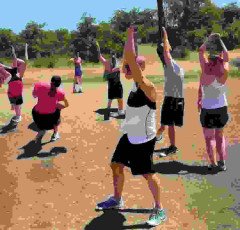





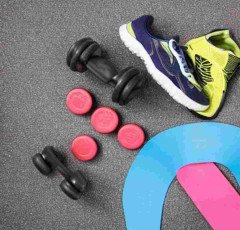


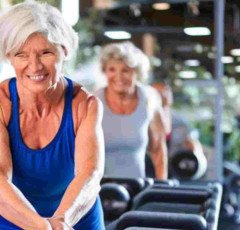


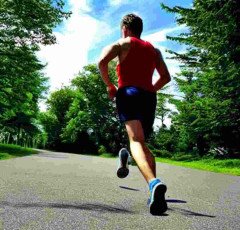


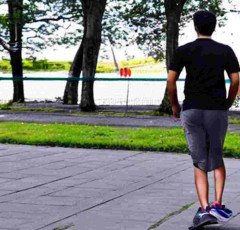


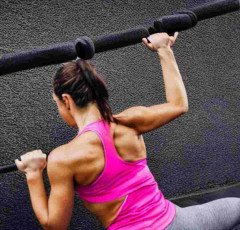

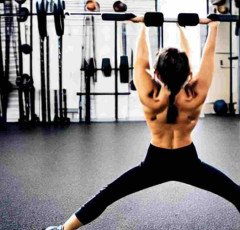




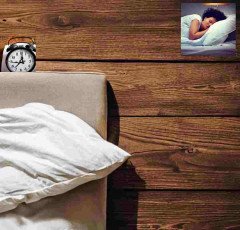

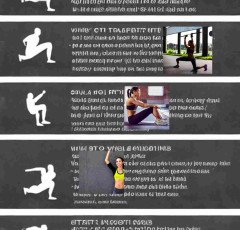




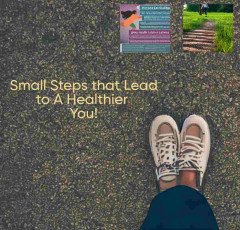












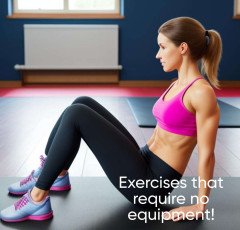

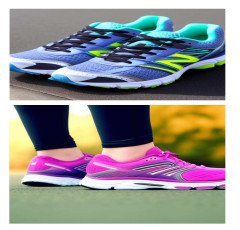


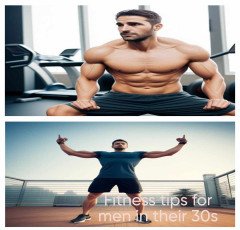
















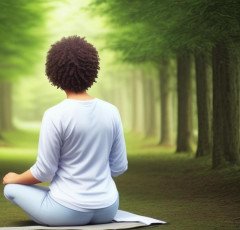
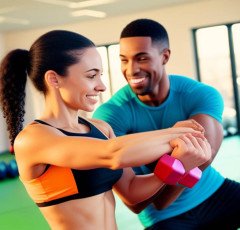


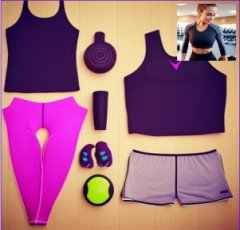














 Acer Laptop
Acer Laptop  BEST SELLER TOP10
BEST SELLER TOP10  Hello Theme
Hello Theme  Smart Doorbell
Smart Doorbell  Online Marketing
Online Marketing  HP Laptop
HP Laptop  Crocs
Crocs  ELECTRONIC ACCESSORIES
ELECTRONIC ACCESSORIES  Best Robotic Vacuum Cleaners
Best Robotic Vacuum Cleaners  Pet Care Products
Pet Care Products  Favorite Company (Cuelinks)
Favorite Company (Cuelinks)  Wireless Bluetooth Earphones
Wireless Bluetooth Earphones  Realme Smart Phone
Realme Smart Phone  SEO Checklist
SEO Checklist  Hanging Lights For Living Room
Hanging Lights For Living Room  ASUS Laptop
ASUS Laptop  Smart Watches
Smart Watches  Creative Brief For Video Shoot
Creative Brief For Video Shoot  Digital Voice Recorder
Digital Voice Recorder  Rakhi
Rakhi  TitTok Revolution
TitTok Revolution  Women Fashion
Women Fashion  Home Decor Items
Home Decor Items  Door Handle Collection
Door Handle Collection  Kitchen Daily Use
Kitchen Daily Use  Bathroom Mirrors
Bathroom Mirrors  Online Technology Classes
Online Technology Classes  Unreal Engine 5 For Beginners Learn The Basics Of Virtual Production
Unreal Engine 5 For Beginners Learn The Basics Of Virtual Production  Only For The United States
Only For The United States 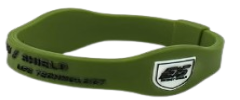 Wristbands
Wristbands  Wireless Gaming Mouse
Wireless Gaming Mouse  Air Purifier for Home
Air Purifier for Home  Best Home Appliances
Best Home Appliances  NordPass
NordPass  Dual USB Car Charger
Dual USB Car Charger  4k Projector For Home
4k Projector For Home  Graphics & Design
Graphics & Design  Artificial Intelligence
Artificial Intelligence  ASPINAL LONDON
ASPINAL LONDON  Dell Laptop
Dell Laptop  Healthy Ingredients
Healthy Ingredients  Prime Video
Prime Video  Puma (Clothing & Accessories)
Puma (Clothing & Accessories)  All Wireless Products
All Wireless Products  Duke T Shirts
Duke T Shirts  Hot Bags For Pain Relief
Hot Bags For Pain Relief  Kitchen Tap
Kitchen Tap  Best Selling Books
Best Selling Books  1150+Trendy kids coloring pages Bundle
1150+Trendy kids coloring pages Bundle  Men Clothing
Men Clothing  Samsung Mobile
Samsung Mobile  Best Phone
Best Phone  SOFAS
SOFAS  NordLocker
NordLocker  Top Rated From Amazon
Top Rated From Amazon  Motion Sensor Light
Motion Sensor Light  Unlimited access to classes on illustration, photography, design, film, music
Unlimited access to classes on illustration, photography, design, film, music  Echo Dot - Smart speaker with Alexa
Echo Dot - Smart speaker with Alexa  RPM 3.0
RPM 3.0  Best Sellers On Amazon
Best Sellers On Amazon  Apple iPhone
Apple iPhone  Essentials for Gamers
Essentials for Gamers  Sennheiser
Sennheiser  Amazon Best Selling Products
Amazon Best Selling Products  One World Collection
One World Collection  iPhone cable
iPhone cable  The Click Engine
The Click Engine  The Secret Email System
The Secret Email System  Wall Lamp
Wall Lamp  NordVPN
NordVPN  Stylish Sneakers by Red Tape
Stylish Sneakers by Red Tape  LCD Writing Tablet
LCD Writing Tablet  Adidas Shoes
Adidas Shoes 


















